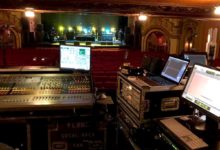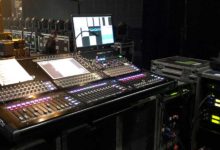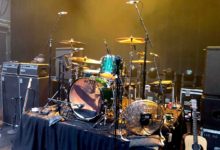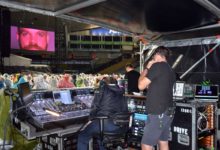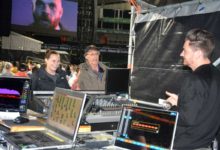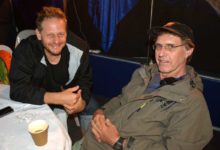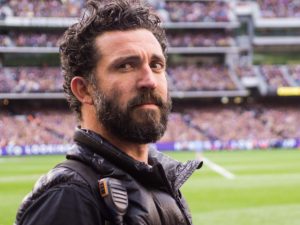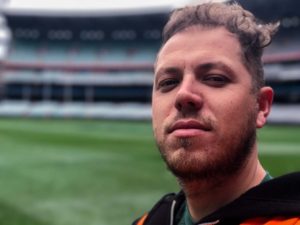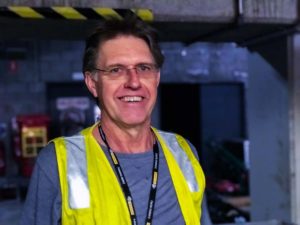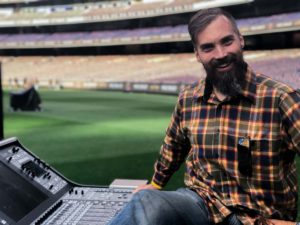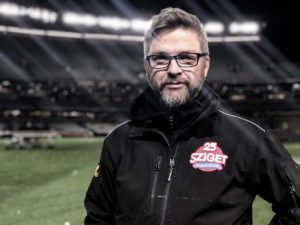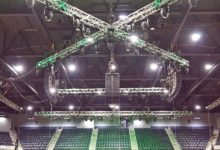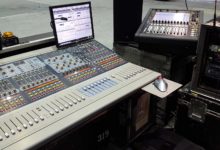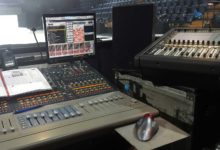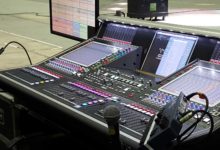‘Coachella for accountants’ – Xerocon Brisbane 2018
Xerocon was launched by leading accounting software brand Xero back in 2010 and today is the largest accounting technology conference in Australasia.
It brings together more than 3000 accountants, bookkeepers and financial professionals from Australia, New Zealand and Asia.
“Hailed ‘the Coachella for accountants’, Xerocon has achieved an almost cult-like following amongst the best in the business, so it was essential that Xerocon Brisbane 2018 delivered unrivalled heights of engagement and emotion,” said Laura Roberts, Managing Director of brand communications company INVNT and Xerocon’s event agency.
Held at the Brisbane Convention & Exhibition Centre, JPJ Audio were contracted by INVNT and technical directed by Matthew Russell, to supply an audio solution to match the event’s high production values. A solution was required that could cater to the opening act of a high energy DJ to clear crisp intelligible audio to enhance the meaningful and passionate stories told by keynote speakers.
The show was held in the round plenary style and as with most corporate productions, it was imperative that the video screens could be viewed with no obstruction. Fortunately JPJ Audio are very experienced in working PA placement into a video setup and as usual, delivered a successful outcome.
With four massive video screens forming a cube above the round stage, a neat and tidy PA system was required so as not to interfere with the visuals. Eight hangs of nine L-Acoustics dV-Dosc were deployed all in a left/right configuration at each corner.
It was planned to add L-Acoustics dV-SUBs to the PA hangs but weight restrictions on the roof were severe and so the subs were placed under the stage.
 “We had twelve SB218 subs in a circle to get a nice wide rumble and big sub feel for when the content had low end in it, just to help get the crowd pumping,” added Matt Morrison of JPJ Audio. “We also had twelve L-Acoustics 108P around the stage for front fill. Originally the client wanted them underneath the stage with the subs so they were hidden but a solid fascia was added to the set which meant you couldn’t hear them! We redesigned the system by placing them around the video monitors onstage to cover the first few rows. It all looked neat and tidy in the end and of course, sounded great.”
“We had twelve SB218 subs in a circle to get a nice wide rumble and big sub feel for when the content had low end in it, just to help get the crowd pumping,” added Matt Morrison of JPJ Audio. “We also had twelve L-Acoustics 108P around the stage for front fill. Originally the client wanted them underneath the stage with the subs so they were hidden but a solid fascia was added to the set which meant you couldn’t hear them! We redesigned the system by placing them around the video monitors onstage to cover the first few rows. It all looked neat and tidy in the end and of course, sounded great.”
Control for the plenary system was on a compact yet powerful Digico SD11 operated by Gary Flemming.
During the day the venue was broken into six theatres, one used the plenary control whilst the others all had their own small control system, three with Soundcraft Si compacts and two with Yamaha O1V96. These all fed The PA People who provided silent-disco PA systems.
“The PA People handed FM receivers out to everyone and set up an FM control which we plugged in to and that’s how all of the breakouts could go at the same time,” explained Matt. “Everyone in the crowd had a receiver into which they could punch a pre-set frequency to listen to whichever breakout they wanted. It was a great little system.”
With audio, lighting and video all competing for weight allocations, this was no simple project but JPJ’s experience shone through.
JPJ Crew:
Tim Seconi, Will King, Matt Morrison, Daniel Charlton, Matt Debien.






